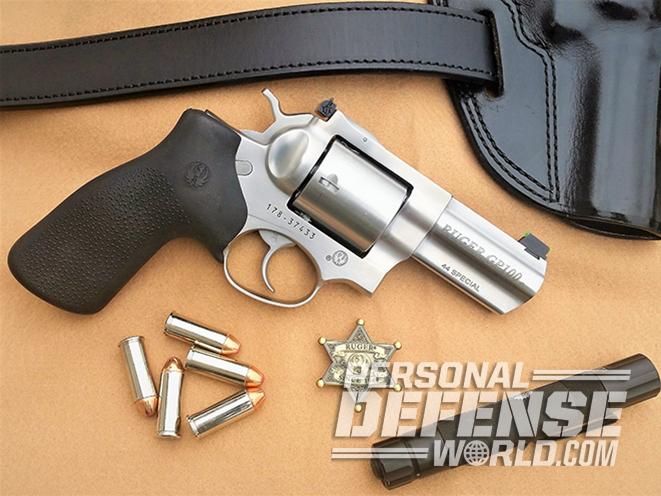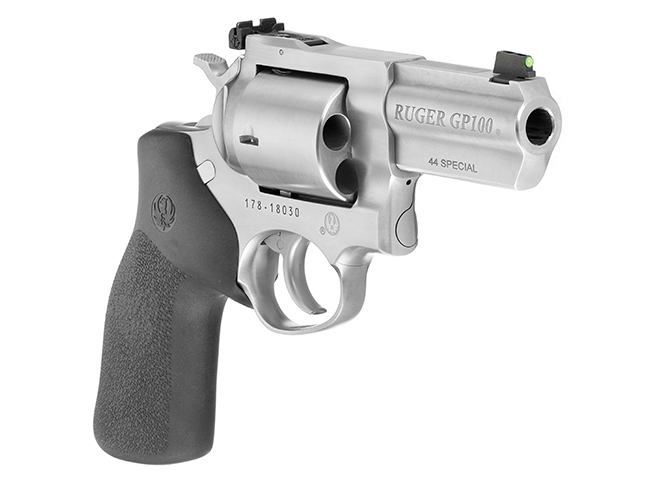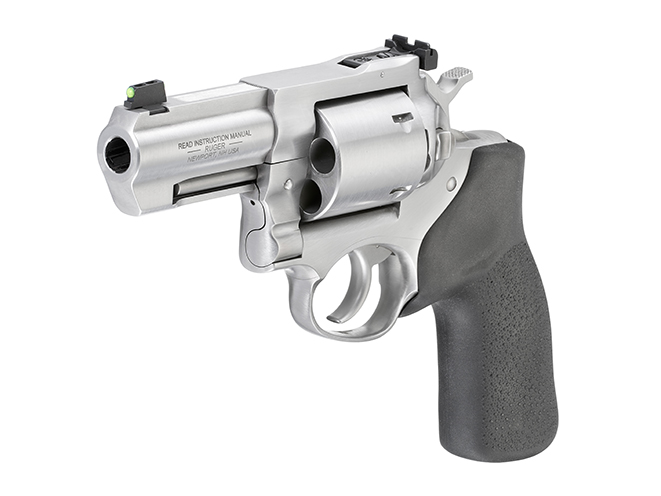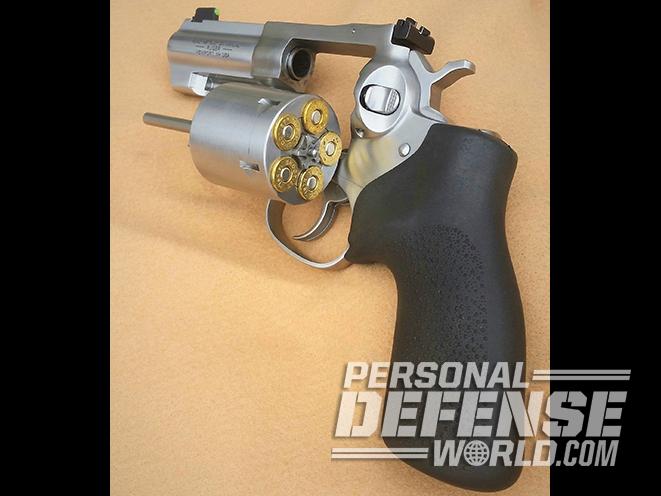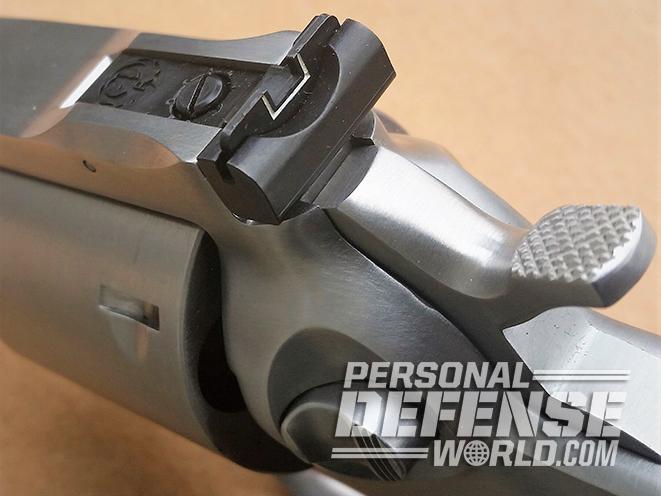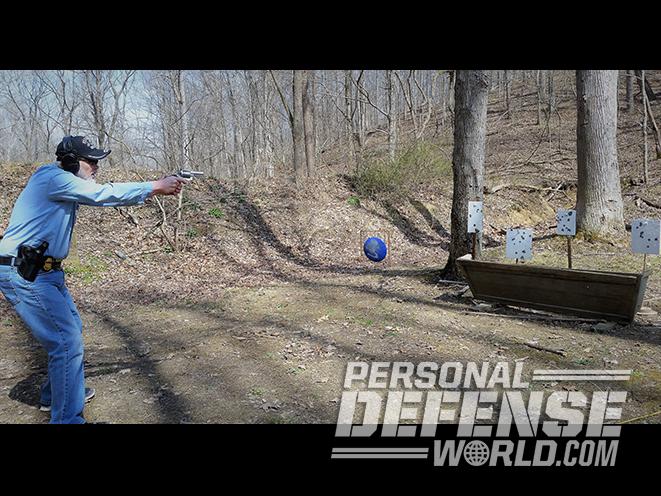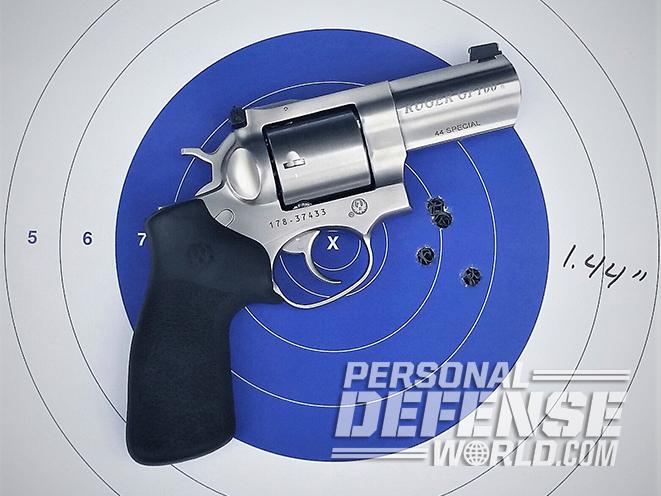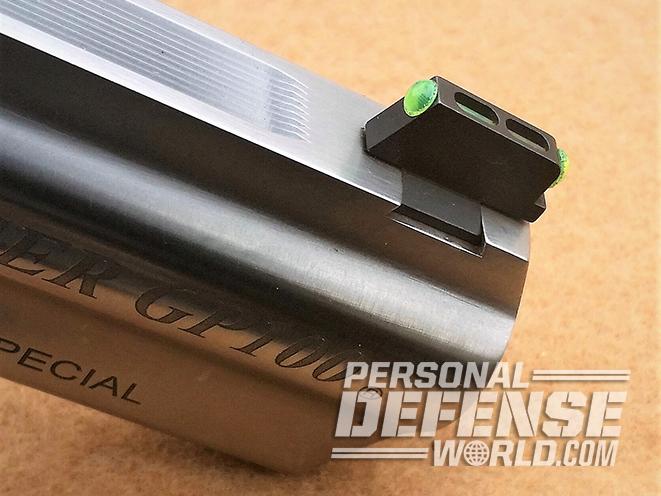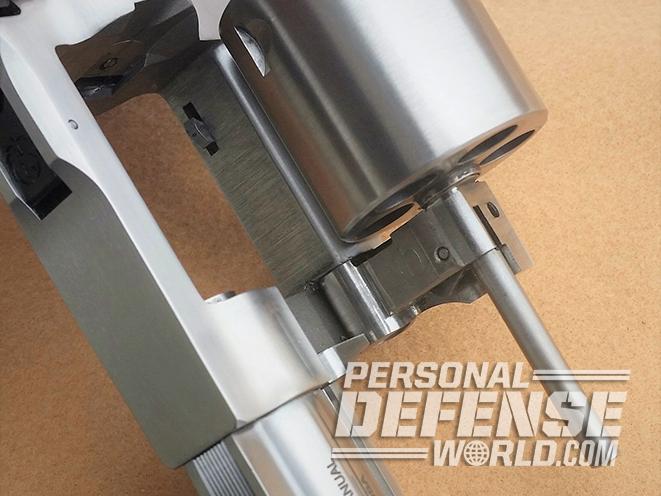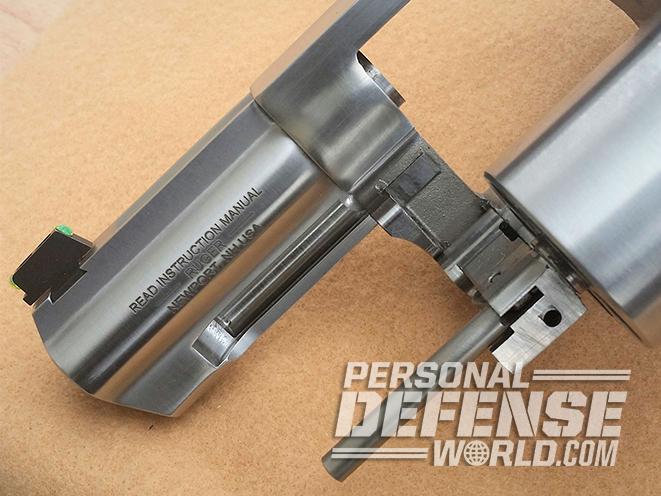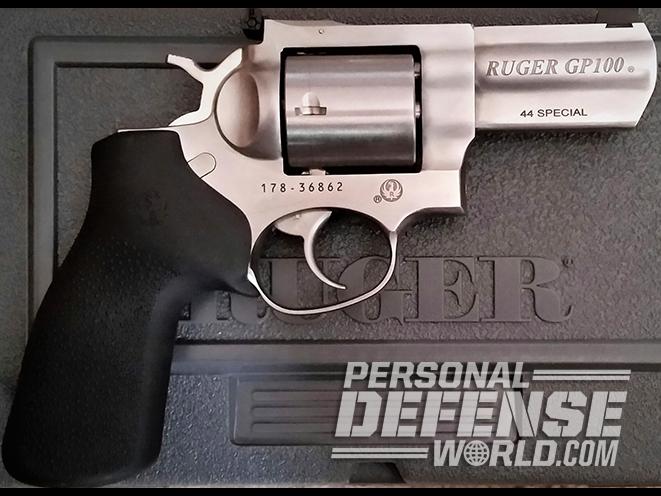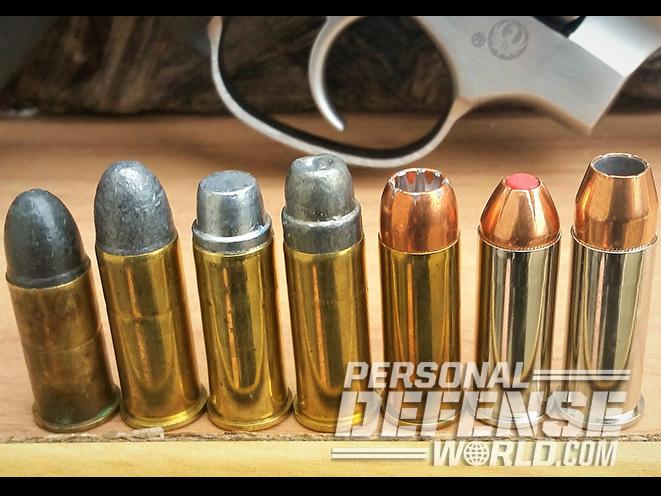Ruger recently introduced some exciting new products, especially handguns. The Ruger American Pistol can now be had as a compact version in .45 ACP. Then there’s the SR1911 Target, the LC9s with new sight options, the improved LCP II in .380 ACP, the rimfire Mark IV series, the large-framed Redhawk revolver with an eight-shot cylinder and 2.75-inch barrel in .357 Magnum, and in my opinion, the best: a medium-framed Ruger GP100 in .44 Special with a five-shot capacity. As a lifelong fan of the .44 Special cartridge, it’s exciting to have a fairly compact but robust wheelgun in a versatile caliber that can handle light loads or some pretty heavy-duty stuff if needed.
Yes, a cadre of handgunners revere the .44 Special. These include past and current greats like Elmer Keith, Skeeter Skelton and John Taffin. What makes a blackpowder cartridge introduced in 1907 so popular that new revolvers are still being chambered for it 110 years later? Originally, it was a ballistic improvement on the 19th century .44 Russian cartridge, which Smith & Wesson chambered in its large No. 3 sixguns. With newer and stronger swing-out-cylinder revolvers from Colt and S&W, a more powerful .44 cartridge was called for, so the older .44 cartridge case was lengthened by 0.2 inches for added powder capacity, and the 246-grain LRN bullet of the Russian load was retained. At about 755 fps with 310 foot-pounds of energy (fpe) at the muzzle, it didn’t set the world on fire, but it was a starting place for shooters who liked to roll their own for better performance. In beefy revolvers such as the N-Frame S&W Hand Ejectors or Colt New Service, the .44 Special’s potential could be realized and loads worked up to handle man or beast.
Through the years, Ruger has chambered its single-action Blackhawk revolvers in .44 Special, and any revolver chambered for .44 Magnum can also shoot the lighter .44 Sp ecial. The marriage of the GP100 with the .44 Special is a match made in gun heaven, and it’s been a long time coming.
Advertisement — Continue Reading Below
The GP100’s Legacy

The GP100 was designed to be an improvement on the Security-Six, a medium-framed .357 Magnum that Ruger introduced in the 1970s to compete with the S&W Model 19/66 and Colt Trooper MK V for the police market. When S&W came out with the L-Frame to address the concerns about constant use of .357 Magnum ammo in K-Frame guns, Ruger followed suit in 1985 with the GP100. However, the police revolver was singing its swan song, as the move by the military that year to a high-capacity 9mm prompted American law enforcement agencies to re-examine their sidearm needs and start converting to “wondernines.”
- RELATED STORY: Right-On Target – The Ruger SR1911 Target .45 ACP
It’s too bad that happened, because the GP100 was reinforced in all the necessary areas to handle a steady diet of .357 Magnum loads, and the “medium magnum” was a proven fight-stopper. Ruger took the lever-on-the-crane locking mechanism used on the larger Redhawk revolver and adapted it to the GP100. Besides a beefy topstrap, the solid frame was changed to incorporate a peg-like appendage on which to mount the grips, instead of the usual grip frame that largely determined the shape of the grips. With this grip peg, a rounded or squared grip could be used in differing lengths, configurations and materials. The original GP100 grips were made of black Santoprene, with contrasting side panels made of rosewood or goncalo alves.
The heavy-duty sixgun could be had in blued or brushed stainless steel finishes, and through the years, it has been chambered in .357 Magnum, .38 Special, .327 Federal Magnum and .22 LR. It has always featured a fully adjustable rear sight and a ramped front sight, plus a full-underlug barrel in 3-, 4.2- and 6-inch lengths. This rugged build makes the GP100 so attractive as a medium-plus-sized revolver in a large-bore caliber.
Advertisement — Continue Reading Below
Brand-New Ruger GP100 Variant

This newest Ruger GP100 variant has a versatile 3-inch barrel, and to further enhance the durability of the already strong design, it has an unfluted, five-shot cylinder with locking notches offset between the chambers. It features all-stainless-steel construction along with the traditional click-adjustable rear sight. The front sight has a green fiber-optic insert that is protected in a ramp-style housing dovetailed into the upper barrel rib.
For this new take on the GP100, Ruger chose a black rubber Hogue Monogrip with pebbled texturing for traction. This cushioned, recoil-absorbing grip differs from the norm because it doesn’t have finger grooves, which makes it more adaptable to hands of various sizes and shapes. Of course, the grip can always be changed out with another factory or custom grip if needed.
The test gun came in a sturdy, gray plastic case with a safety cable lock, a disassembly pin, the owner’s manual and some other printed literature. As I hefted the new wheelgun, my first thought was “solid.” This is a rugged-looking, business-like handgun with nothing on it that doesn’t belong.
Advertisement — Continue Reading Below
The brushed stainless finish was well done. The edges were sharp or rounded where they should be, and the metal-to-metal fit was exacting. There wasn’t a lot of wording stamped or etched on the gun, which I find tasteful. The Hogue Monogrip felt good in my medium-sized hands, and the balance on the GP100 was spot-on.
It has a smooth-faced trigger about 0.35 inches wide, and the hammer has a flat, checkered spur. The single-action trigger pull weighed 4.6 pounds on average, according to my Lyman digital trigger pull gauge. The double-action pull was smooth but heavy at about 13 to 15 pounds. This is one of those double-action pulls where, toward the end, you can feel a little catch that lets you finish the pull in such a way that it almost feels like a single action.
Ammo & Gear
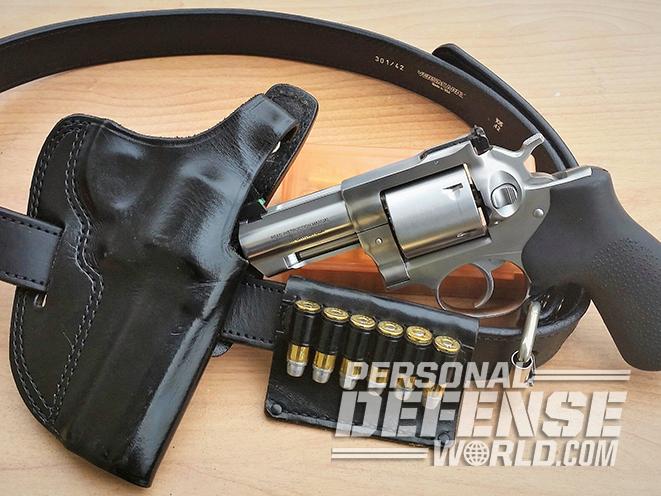
Advertisement — Continue Reading Below
For test ammunition in .44 Special, I went with four factory loads from Black Hills, Federal, Hornady and Sig Sauer. For a handload, I made up a small batch of “Skeeter” loads—a favorite of the late gun writer Skeeter Skelton. I used new .44 Special brass, Federal No. 150 large pistol primers and a 240-grain, cast-lead, semi-wadcutter (SWC) bullet backed by 7.5 grains of Alliant Unique smokeless powder. According to one of Skelton’s articles from 1969, this load has a velocity of about 940 fps.
To sheath this new Ruger GP100, I selected an old-timer from Don Hume Leathergoods: the Model 722 No. 7. This holster is half pancake and half tunnel loop, and it does a great job of concealing and distributing the weight of a big revolver. The rear belt slot pulls the butt of the revolver into your body when carried just behind the hip. It’s made of top-grain leather with double stitching at stress areas. The closest holster still in the Don Hume line is the Model 721, which is a full pancake-type design.
I paired that holster with a six-round .44 cartridge belt slide of unknown origin and backed that up with a Bianchi Speed Strip made for .44/.45 rounds. With a 36-ounce handgun, you need a heavy-duty belt, so I chose one from Versacarry made of double-ply leather.
Advertisement — Continue Reading Below
Range Time

Since the .44 Special Ruger GP100 has a 3-inch barrel and adjustable sights, I measured its accuracy by firing five-shot groups in single-action mode with each load from a bench, using a sandbag rest for support, at 15 yards. My tightest five-shot cluster, measuring 1.44 inches wide, was produced by the Black Hills 200-grain JHPs. This load also provided the best group average at 1.71 inches. Second place went to the Federal ammunition at 1.65 inches. Overall, none of the group averages were wider than 2.5 inches. Several good four-shot groups were ruined by flyers—my fault, not the gun’s.
For a practical shooting exercise, I put up a B-27Q red target at 15 yards and loaded the Ruger GP100, cartridge loop slide and Speed Strip with a mix of the .44 Special test cartridges. I then worked through a 30-round combat course that started with point shooting at 3 yards and ended with barricade shooting at 15 yards. All of this shooting was done in double-action mode and began from the holster.
- RELATED STORY: Gun Review – Ruger’s New Model Blackhawk Revolver
Up close, I fired with just my strong hand and then just my support hand. At 7 yards, I fired double- and triple-taps, then shot from standing and kneeling positions behind the barricade. I reloaded as needed. The loops and speed strip worked well. With the exception of the two pelvis shots in the 7- and 8-rings, the rest of the shots stayed within the 9-, 10- and X-rings of the white inset within the target. The GP100 was controllable, and I warmed up to the fiber-optic front sight a little more during this phase of my test. The Don Hume holster kept the gun secure and out of the way until I needed it, and reholstering was easy. I wore the GP100 around in this holster for two days concealed, and it was comfortable and kept the revolver hidden beneath my light jacket.
Advertisement — Continue Reading Below
Next, I used some Cowboy Action loads to hit some steel targets. This is where I put the speed on and fired 25 rounds at five square and oblong steel plates at about 7 yards. I used a modified isosceles stance with a two-handed hold and just put the glowing green fiber-optic front sight on each plate as I stroked the double-action trigger. I loaded as needed from the loops and speed strip, but this time I used a tree trunk for cover while reloading. The Hogue Monogrip helped in reducing muzzle flip, and it absorbed whatever felt recoil wasn’t soaked up by the GP100’s 36-ounce weight. There were no malfunctions on this or any of the previous stages, and I came away from the range knowing that Ruger would not get the test gun back.
Caliber: .44 Special
Barrel: 3 inches
Advertisement — Continue Reading Below
OA Length: 8.5 inches
Weight: 36 ounces (empty)
Grip: Hogue Monogrip
Advertisement — Continue Reading Below
Sights: Fiber-optic front, adjustable rear
Action: DA/SA
Finish: Satin stainless
Capacity: 5
MSRP: $829
For more information, visit ruger.com.
